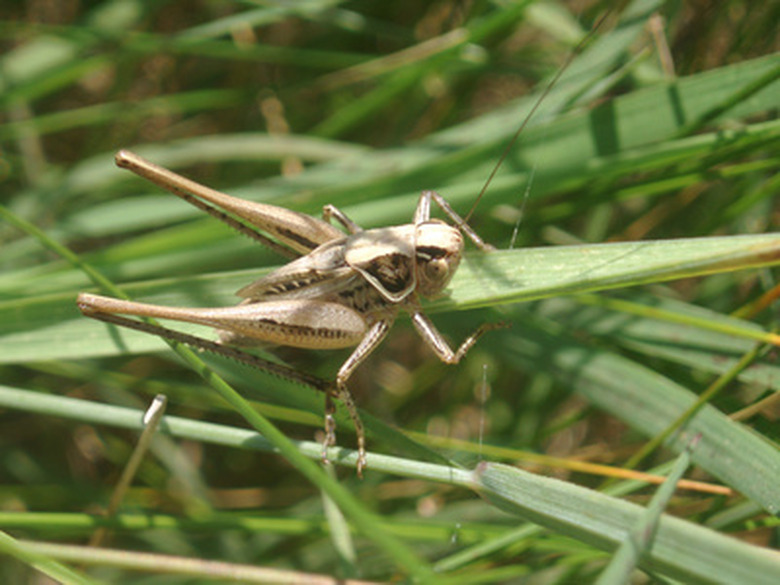How To Kill Grasshoppers In Grass
Grasshoppers are known to feed on crops and plants, but they also feed on grasses. If you have a high population of grasshoppers, they may be damaging your lawn. Because grasshoppers migrate and move about, they are one of the hardest insects to control. Fortunately, it is not impossible, especially if you begin treatment as the eggs are hatching or while the grasshoppers are still nymphs, which molt several times before becoming adult grasshoppers.
Step 1
Monitor the grasshopper population. If you notice them in the late summer or early fall, expect to have a high population of grasshoppers the following year. This will help you treat the problem early the following year when treatment is more effective.
- Grasshoppers are known to feed on crops and plants, but they also feed on grasses.
- Fortunately, it is not impossible, especially if you begin treatment as the eggs are hatching or while the grasshoppers are still nymphs, which molt several times before becoming adult grasshoppers.
Step 2
Apply an insecticide, such as one that contains acephate or carbaryl, to your grass in large, even sweeping motions (always follow manufacturer directions). Don't worry about getting every square inch of your grass; covering your lawn by just 50 percent is effective enough since grasshoppers are very mobile. You can apply an insecticide when you see lots of grasshoppers, but it is more effective in the spring or early summer when the grasshoppers are hatching and/or are still nymphs.
Step 3
Apply insect baits that contain the ingredient Nosema locustae, which only work on young grasshoppers. Locate breeding grounds if possible and place the baits there. Look for large amounts of nymphs and for egg beds. Eggs are laid in the top 2 inches of soil with about 20 to 100 small, tannish eggs in one area.
- Apply an insecticide, such as one that contains acephate or carbaryl, to your grass in large, even sweeping motions (always follow manufacturer directions).
- You can apply an insecticide when you see lots of grasshoppers, but it is more effective in the spring or early summer when the grasshoppers are hatching and/or are still nymphs.
Step 4
Purchase some chickens, turkeys or guinea hens, which feed upon grasshoppers. Fence in your vegetable garden to protect your crops from your new pets, if applicable.
Kill Grasshoppers With Vinegar
There are many varieties of grasshoppers across the United States. Soon the adult grasshopper has wings and can travel many miles in search of sustenance. Many households hesitate to use pesticides on their home vegetable sources and are turning to a variety of safe, organic control methods. Pour the mixture into a large insecticide sprayer. Spray the solution in the early morning on all the leaves, stems and ground for grasshoppers. If you see grasshoppers thoroughly drench them with the solution. Wait two days and then repeat the application. Continue until the grasshopper infestation has significantly diminished. Pick up the dead grasshoppers in your garden. Fill large plastic freezer bags a quarter of the way full with pure apple cider vinegar with 1 tbsp. This is an excellent trap for grasshoppers. Dispose of the grasshopper bodies into a garbage bag.
- Purchase some chickens, turkeys or guinea hens, which feed upon grasshoppers.
- If you see grasshoppers thoroughly drench them with the solution.
Things Needed
- Insecticide
- Insect baits
- Poultry
